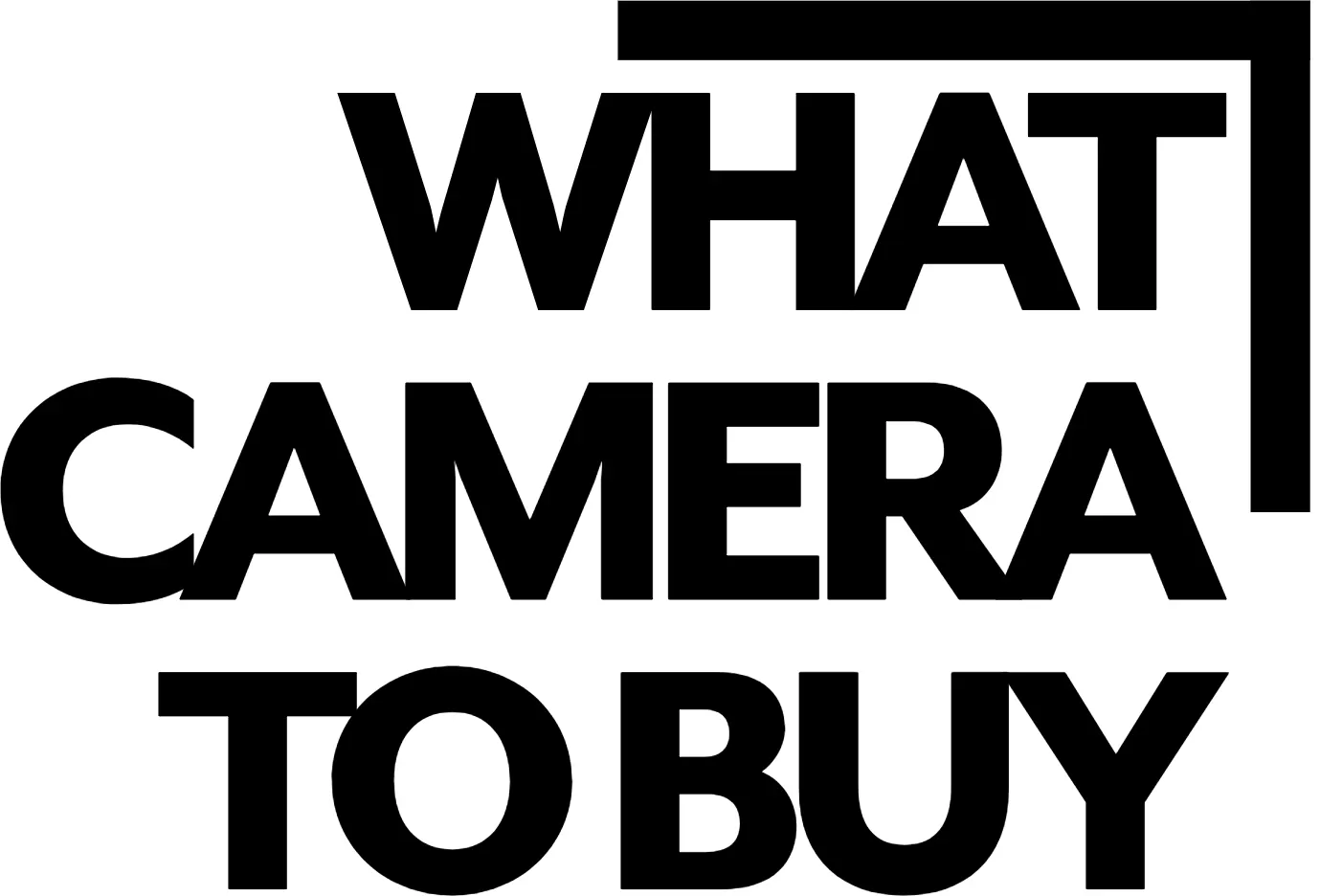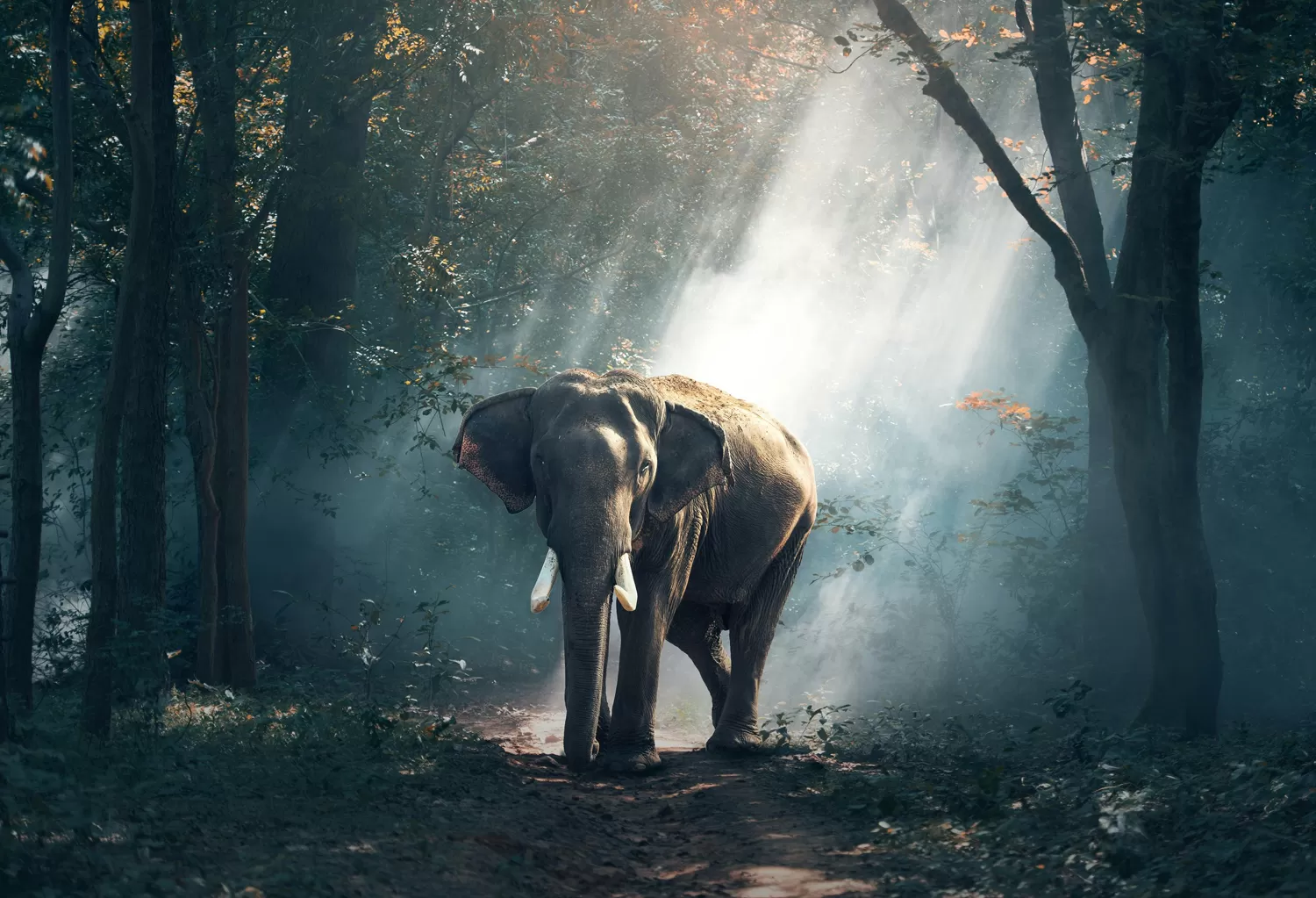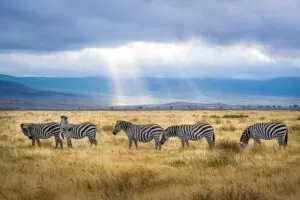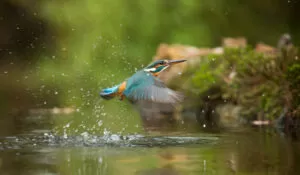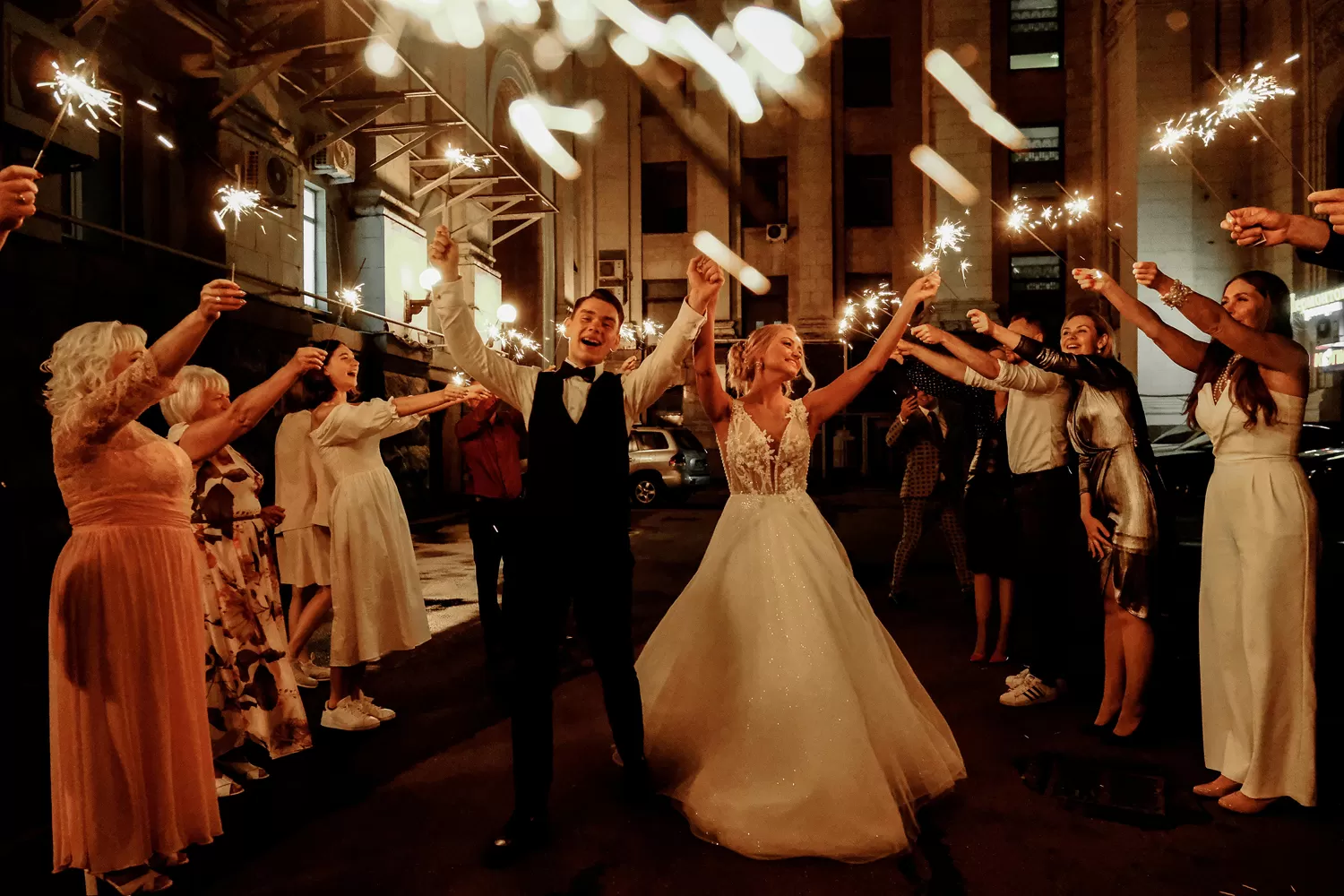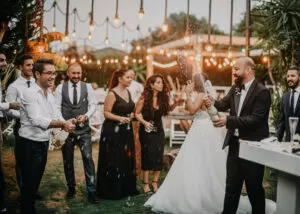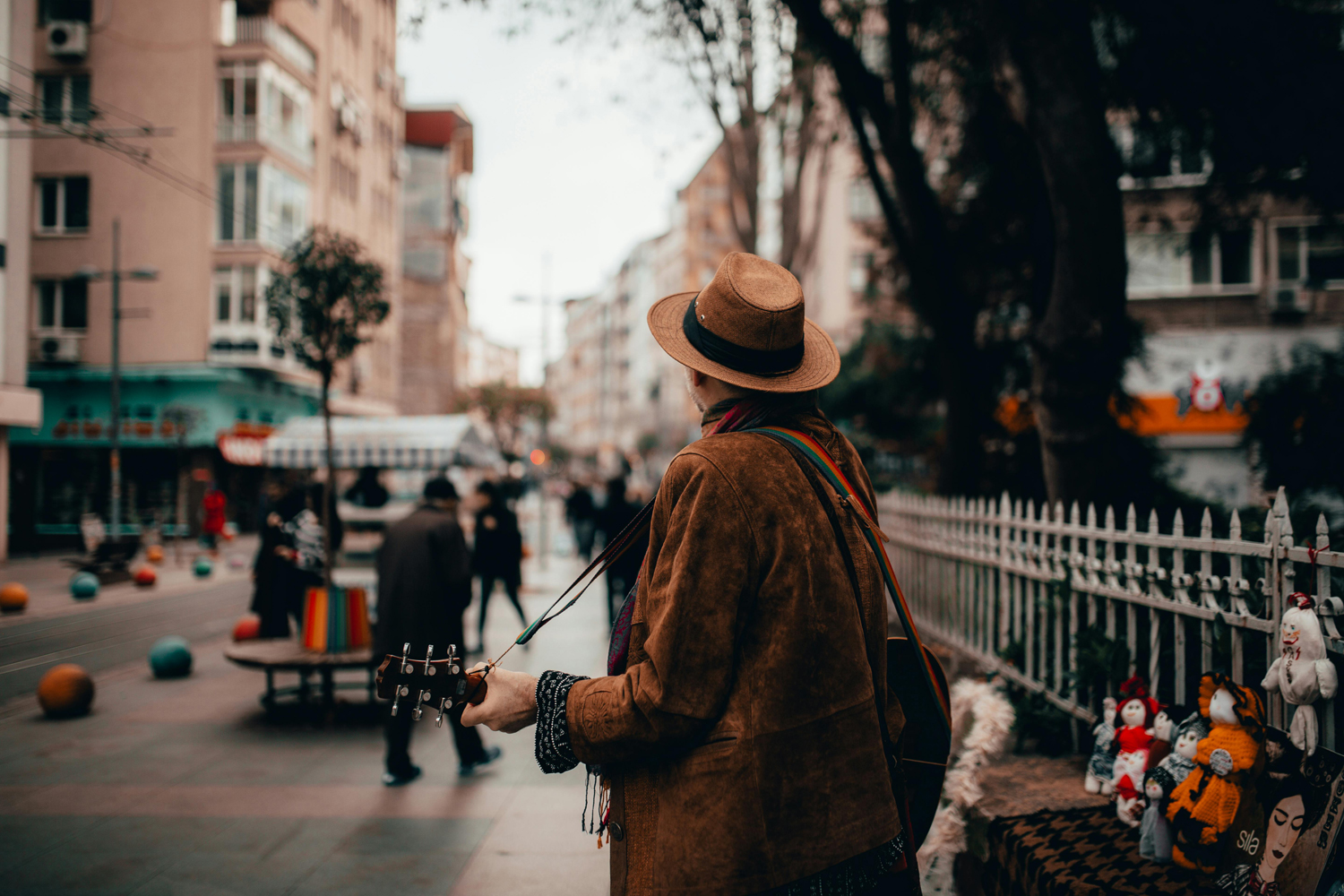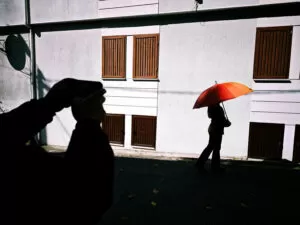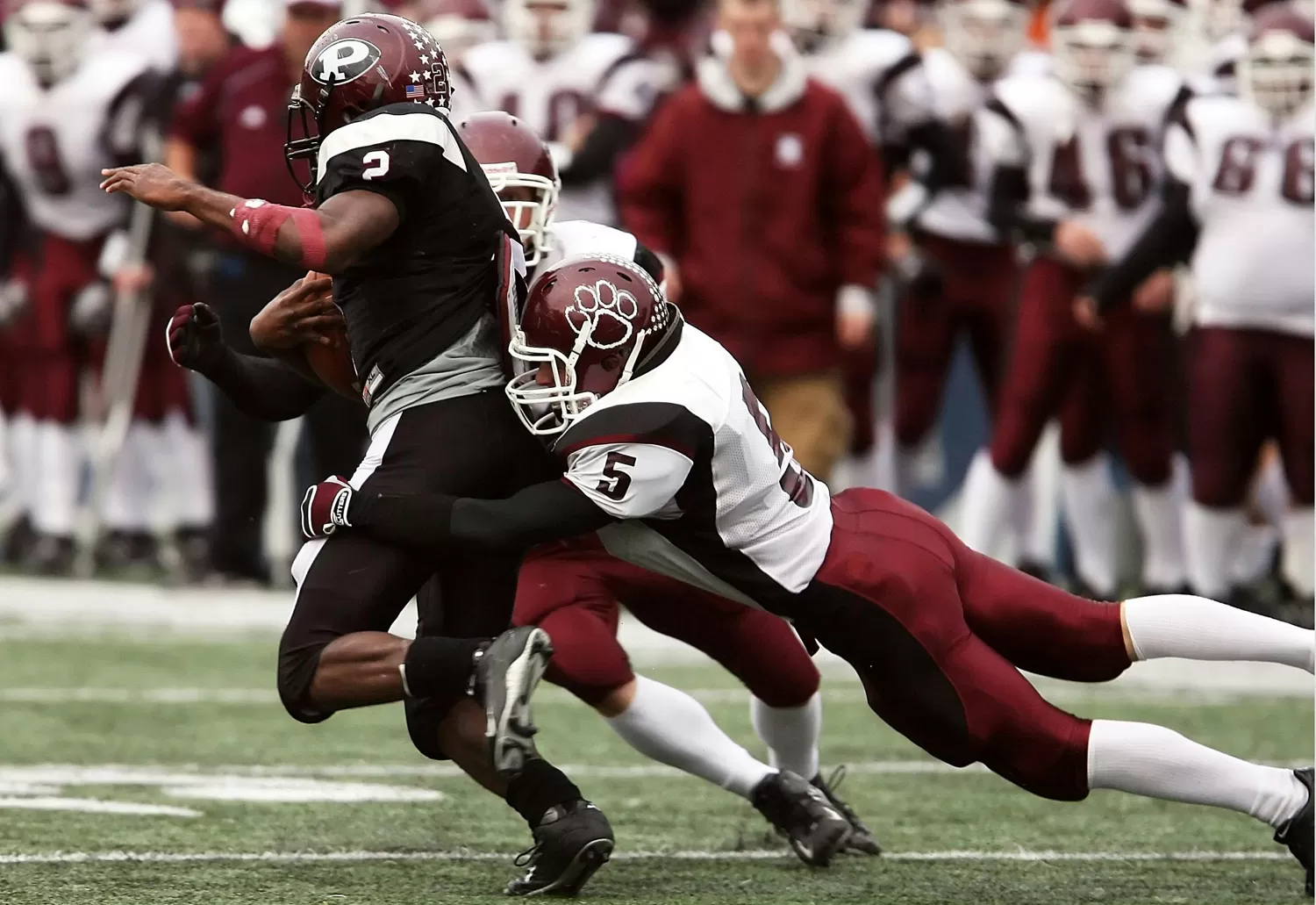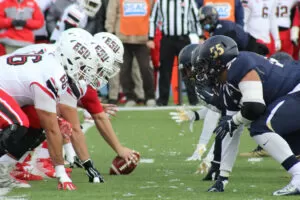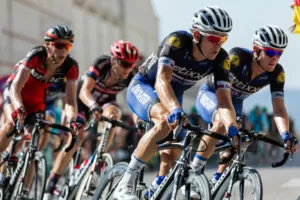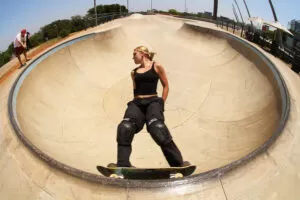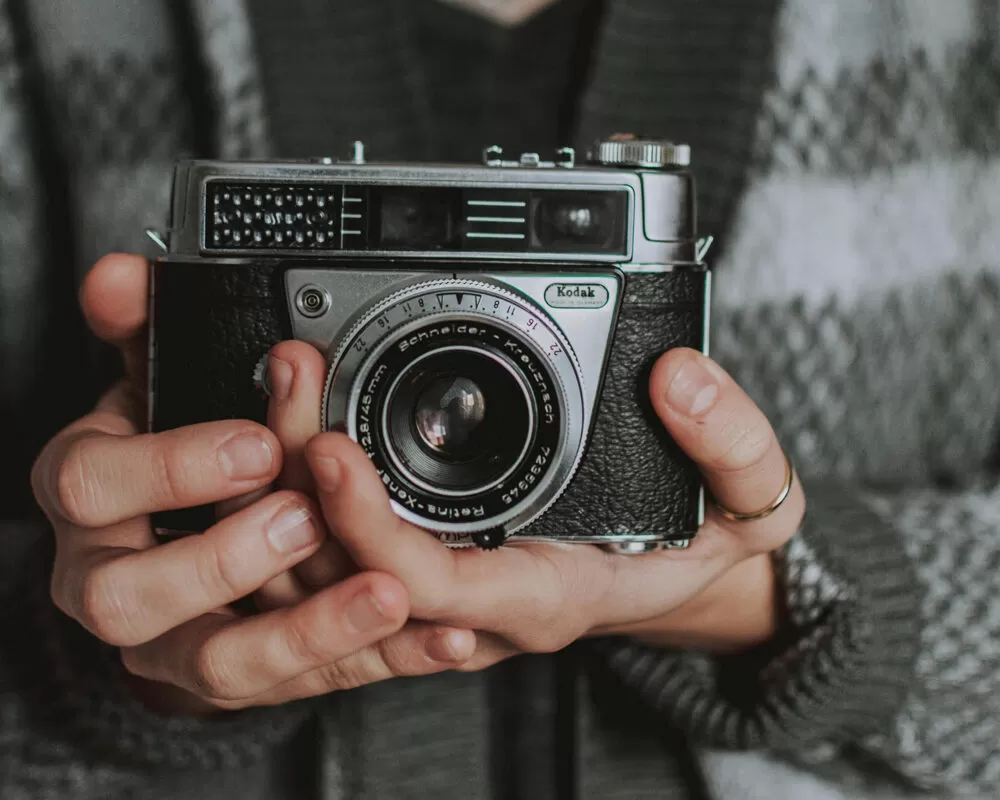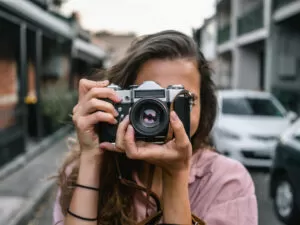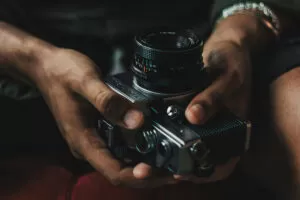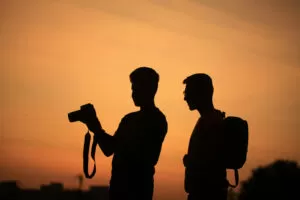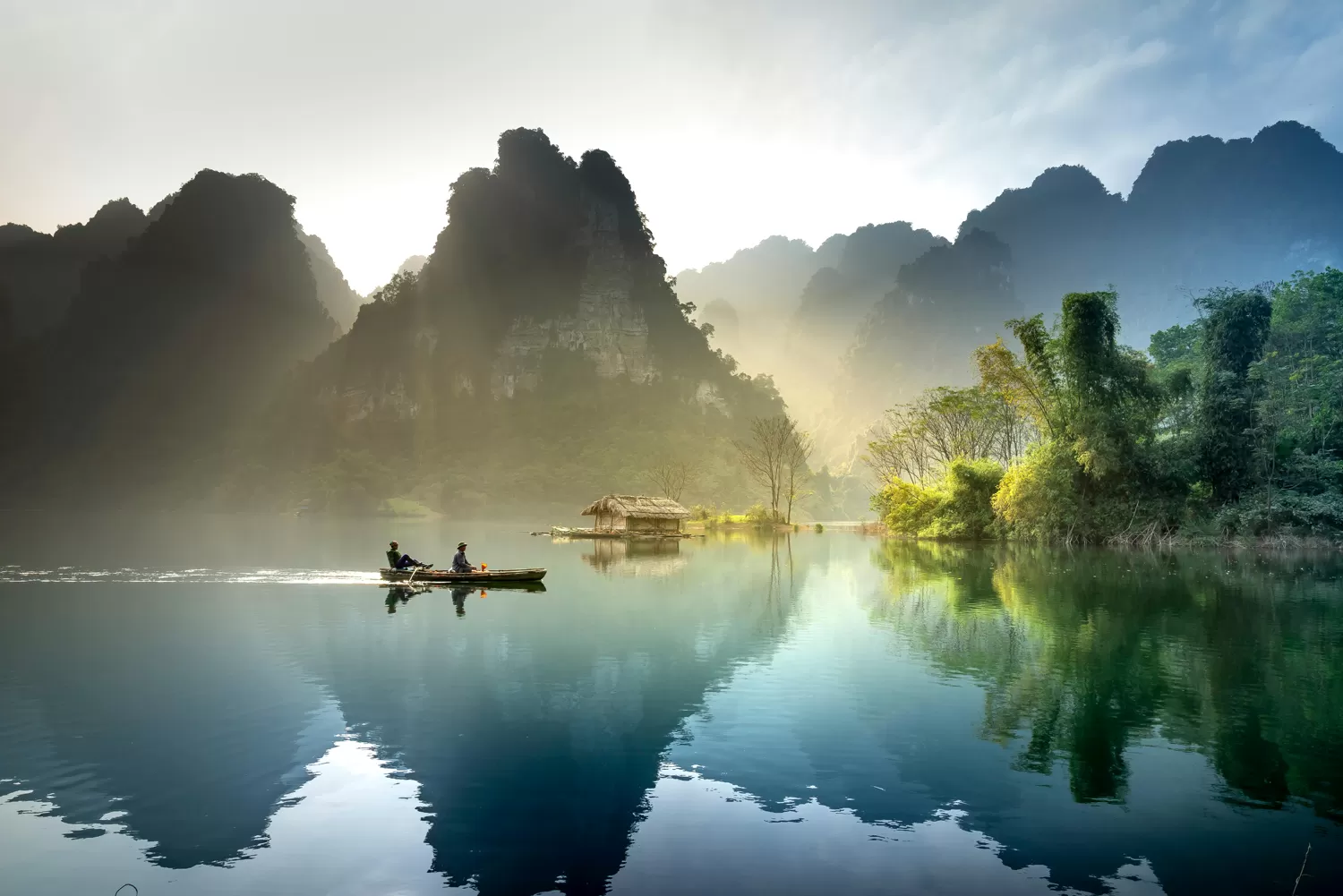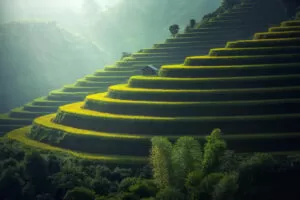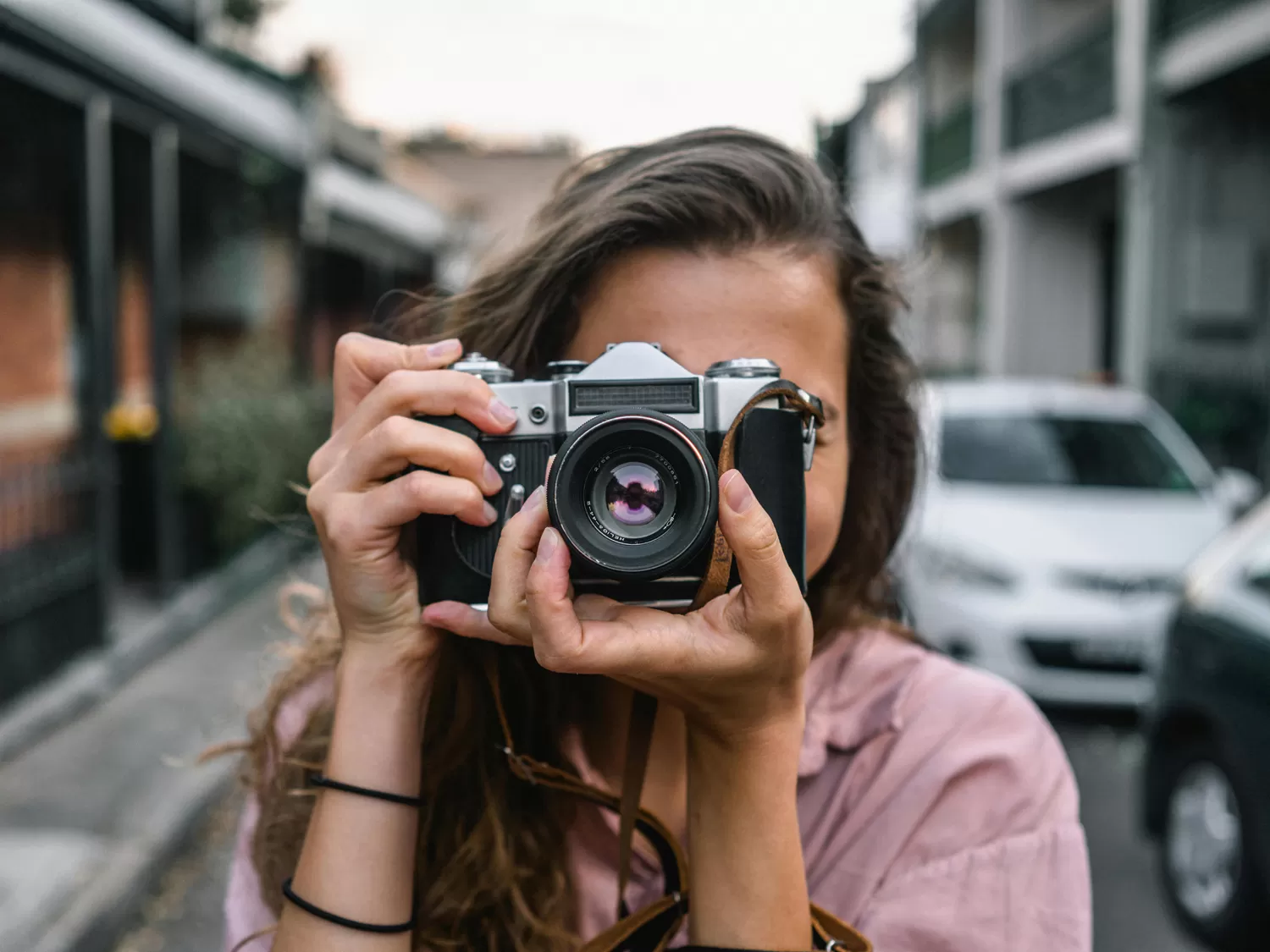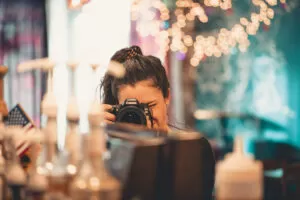What Camera to Buy for Wildlife Photography
What Camera to Buy for Wildlife Photography?
Choosing the right camera for wildlife photography can feel daunting, but the key is to find a camera that excels in a few critical areas. Unlike other genres of photography, wildlife demands specific features to capture fast-moving, often distant, and unpredictable subjects. The good news is that with the rapid advancements in camera technology, there are excellent options available for every budget and skill level.
Here’s a breakdown of the most important camera features to consider and some of the top-rated models on the market today.
Essential Camera Features for Wildlife Photography
1. Fast and Accurate Autofocus (AF)
This is arguably the most crucial feature for a wildlife photographer. Animals move quickly and unpredictably, and a slow autofocus system will result in missed shots. Look for cameras with a robust, intelligent autofocus system that can detect and track your subject, especially features like animal or bird eye-detection and tracking. Modern mirrorless cameras from brands like Nikon, Canon, and Sony have set a new standard here, often using AI to predict a subject’s movement.
2. High-Speed Burst Rate
The “decisive moment” in wildlife photography, like a bird taking flight or a predator chasing its prey, can be over in a flash. A high-speed continuous shooting mode, also known as a burst rate, allows you to capture multiple frames per second, significantly increasing your chances of getting the perfect shot. For beginners, a camera with a burst rate of 10 fps or more is a great start, but professional-grade cameras can reach 30, 40, or even 120 fps.
3. Sensor Size and Resolution
Your camera’s sensor size is a critical factor in image quality and performance.
- Full-Frame Sensors: These larger sensors excel in low-light conditions, providing superior image quality and dynamic range. They are ideal for high-resolution images and offer more detail, which is beneficial for heavy cropping.
- APS-C (Crop) Sensors: These smaller sensors have a “crop factor,” which effectively multiplies the focal length of your lens. This is a huge advantage for wildlife photographers as it gives you more “reach” without needing a longer, heavier, and more expensive lens. While they may not perform as well in extreme low light as their full-frame counterparts, many modern APS-C cameras have excellent low-light capabilities.
4. Low-Light Performance
Wildlife is often most active at dawn and dusk, when the light is low. A camera with good low-light performance allows you to use a higher ISO setting to maintain a fast shutter speed without introducing excessive noise into your images. The latest cameras from all major brands have made significant strides in this area, making high ISO settings more usable than ever.
5. Weather Sealing and Ergonomics
Wildlife photography takes you outdoors, often in less-than-ideal conditions. Weather sealing protects your camera from dust and moisture, ensuring its reliability. Additionally, consider the camera’s weight and ergonomics. If you plan to hike long distances, a lighter setup might be more beneficial, and a comfortable grip is essential for long days in the field.
Summary
In essence, the right camera for wildlife photography is a fast, intelligent, and robust piece of equipment. It needs to keep up with the unpredictability of nature, from an incredible burst rate like the Sony A9 III to a sophisticated autofocus system with subject tracking. Image quality is supported by both sensor size and a camera’s ability to handle low-light situations. Finally, the camera’s design should be ergonomic and durable enough to withstand the environment. By focusing on these core features—speed, image quality, and durability—you can find a camera that will empower you to capture the wild in all its breathtaking glory.
What Camera to Buy for Wedding Photography
What Camera to Buy for Wedding Photography?
Wedding photography is a high-pressure genre that demands versatility, reliability, and the ability to capture a wide range of moments, from the quiet intimacy of a vow exchange to the chaotic energy of a dance floor. There are no second chances on a wedding day, so your camera must be a tool you can trust implicitly. This article will guide you through the essential features to look for in a camera for wedding photography, focusing on what matters most when capturing a couple’s most important day.
Unmissable Moments: Essential Camera Features
The camera you choose for a wedding will be your most important piece of gear. It needs to excel in a wide variety of situations and provide the peace of mind that every shot will be captured.
- Low-Light Performance: A wedding day spans from bright daylight to a dimly lit reception hall. A camera with excellent low-light capabilities is paramount. This means a larger sensor that can gather more light, a high native ISO range, and the ability to produce clean, usable images with minimal digital “noise” at high ISO settings. A camera that can handle these challenges will give you more flexibility and creativity in any lighting condition.
- Autofocus System: You cannot afford to miss focus. A wedding day is full of moving subjects, and a fast, accurate, and reliable autofocus system is non-negotiable. Look for cameras with advanced subject detection, particularly for faces and eyes. The ability of the camera to lock on and track a subject in motion, whether they are walking down the aisle or dancing at the reception, is a critical feature.
- Dual Memory Card Slots: This is a professional-grade feature that provides an essential safety net. A camera with dual card slots allows you to write your images to two cards simultaneously. In the event that one card fails or becomes corrupted, you have an immediate backup. For a wedding, where every moment is irreplaceable, this feature provides invaluable peace of mind.
- Silent Shooting: The ceremony is a solemn and quiet part of the day. The loud “clack” of a mechanical shutter can be a major distraction. Many modern mirrorless cameras offer a silent shooting mode using an electronic shutter. This allows you to capture candid and emotional moments without disrupting the moment, making you a more discreet and welcome presence.
- Battery Life and Ergonomics: Wedding days are long, often lasting 8 to 12 hours or more. A camera with a long-lasting battery is a huge advantage, as is the ability to easily swap batteries on the fly. The camera’s ergonomics, or how it feels in your hand, are also important, as you’ll be holding it for a long time.
The Importance of Lenses and System
While the camera body is the heart of your kit, the lenses are your eyes. For wedding photography, you’ll need a versatile selection of lenses to capture everything from wide-angle shots of the venue to intimate portraits. A fast prime lens with a wide aperture is a must-have for creating beautiful, shallow depth-of-field images in low light. A professional zoom lens with a constant wide aperture can also be a workhorse, allowing you to capture a variety of shots without changing lenses.
When choosing a camera, consider the entire system. Look at the range of lenses available for the system you are considering and the cost of both the body and the lenses. A camera system with a wide and affordable range of high-quality lenses will be a better long-term investment.
Summary: Your Guide to Capturing the Big Day
Selecting a camera for wedding photography is a serious decision that requires careful thought. You need a camera that can handle a wide range of lighting conditions, has a fast and reliable autofocus system, and provides the peace of mind of a dual memory card slot. A silent shutter and good battery life are also essential for navigating the long and emotional day. The most important thing is to choose a tool that you are confident with, as confidence in your gear is essential when you’re capturing one of the most important days of a person’s life.
What Camera to Buy for Street Photography
What Camera to Buy for Street Photography?
Street photography is an art form defined by spontaneity, observation, and a certain degree of discretion. The best street photographs are often captured in a split second, requiring the photographer to be ready at all times. The ideal camera for this genre is not necessarily the most technologically advanced, but rather a tool that is an extension of the photographer—compact, fast, and unobtrusive. This article will explore the features that matter most for street photography and help you find a tool that empowers your creative vision on the streets.
The Unobtrusive Tool: Essential Camera Features
The right camera for the street is one that disappears, allowing you to blend in and capture moments as they unfold naturally.
- Compact Size and Discreet Design: A large, professional camera with a huge lens can draw unwanted attention and make people uncomfortable. The best street photography cameras are small, lightweight, and easy to carry for long periods. A camera with a discreet, vintage-inspired design can also be less intimidating to the public.
- Silent Shutter: A quiet camera is crucial for candid photography. A loud mechanical shutter can break the spell of a moment and cause subjects to react, ruining a potentially great shot. Many modern mirrorless cameras offer a silent electronic shutter mode, which is a major advantage for blending into the background.
- Fast Autofocus: While some street photographers prefer to use manual focus, a fast and reliable autofocus system is invaluable for capturing fleeting moments. Look for a camera with an autofocus system that is responsive and accurate, so you can raise the camera and get a sharp shot instantly.
- Tilting Screen: A tilting or articulating screen allows you to shoot from unique angles—down low or up high—without having to lie on the ground or stand on a chair. This can help you capture a different perspective and remain more discreet, as you don’t have to hold the camera to your eye.
- Ergonomics and Simplicity: The camera’s ergonomics, or how it feels in your hand, are important for all-day shooting. Street photographers often value a simple, direct shooting experience with dedicated dials for shutter speed and aperture, which can help them make quick adjustments without diving into menus.
The Lens as Your Eye
For street photography, the lens you choose is arguably more important than the camera body. Many street photographers prefer a fixed-focal-length lens (a prime lens) rather than a zoom lens. A prime lens with a focal length equivalent to 35mm or 50mm is a popular choice, as it provides a field of view that is close to the human eye. The simplicity of a prime lens forces you to “zoom with your feet” and get closer to your subject, which can lead to more engaging and personal photographs.
When making your decision, consider the lens system. A camera with a wide and affordable range of compact prime lenses will be a great long-term investment.
Summary: Your Urban Explorer’s Tool
Choosing a camera for street photography is a deeply personal decision that should be based on your individual style and preferences. The key is to find a camera that is discreet, fast, and comfortable to use. Look for a compact body with a silent shutter and a responsive autofocus system. By focusing on these features and pairing your camera with a high-quality prime lens, you will have a powerful tool that allows you to capture the dynamic and unpredictable world of the street.
What Camera to Buy for Sports Photography
What Camera to Buy for Sports Photography?
The world of sports photography is all about capturing the peak of the action in a fraction of a second. Whether it’s a child’s first football game or a professional motor race, the challenge is to freeze motion, track fast-moving subjects, and do it all with a camera that can keep up. Unlike other genres where you have time to set up your shot, sports photography demands a camera that is fast, responsive, and reliable. This article will guide you through the essential features to look for when making your decision, focusing on what truly matters for capturing dynamic action.
The Need for Speed: Essential Camera Features
In sports photography, speed is everything. Your camera’s ability to capture a fleeting moment can be the difference between a great shot and a missed opportunity.
- Autofocus Performance: This is the most critical feature for any sports photographer. You need a camera with an autofocus system that is not only lightning-fast but also intelligent. Look for a system with a large number of focus points that cover a wide area of the sensor. The camera’s ability to lock onto and track a moving subject is paramount. Modern camera systems often have advanced subject detection, such as face and eye tracking, which can be a game-changer for keeping a subject in sharp focus as they move across the frame.
- Continuous Shooting Speed (Burst Rate): Action happens in the blink of an eye. A high continuous shooting speed, measured in frames per second (fps), increases your chances of capturing that perfect, decisive moment. A camera that can shoot at 10 fps or more is highly desirable. This allows you to fire off a rapid sequence of shots, giving you more options to choose from. While some cameras use a mechanical shutter for this, many modern cameras use a silent electronic shutter, which can achieve even higher speeds and is perfect for situations where you need to be unobtrusive.
- Shutter Speed: To freeze a fast-moving subject, you need a fast shutter speed. This is a fundamental concept in sports photography. Look for a camera with a mechanical shutter that can achieve speeds of at least 1/1000th of a second, with 1/4000th or 1/8000th being even better for extreme action. The ability to use a high-speed electronic shutter can also be a significant advantage.
- Low-Light Performance (ISO): Not all sports are played in bright daylight. A camera with good low-light performance is essential for shooting indoors or at night. A camera with a larger sensor and a high native ISO range will produce cleaner images with less digital “noise” when you have to increase the ISO to achieve a fast shutter speed in poor lighting conditions.
- Ergonomics and Durability: A sports photographer often spends a long time on the sidelines, so the camera’s ergonomics are important. It should feel comfortable and balanced in your hands, especially when paired with a large telephoto lens. A weather-sealed and durable body is also a major consideration, as it will protect your investment from rain, dust, and the occasional bump.
The Role of Lenses and System
While the camera body provides the engine, the lens is your vehicle for capturing the shot. The right lens is just as important as the right camera body. For sports photography, you will often need a telephoto zoom lens to get close to the action from a distance. A lens with a wide, constant aperture is ideal, as it allows more light into the camera and provides that beautiful, blurred background effect.
When choosing your camera, consider the entire system. Look at the range of lenses available for the system you are considering, and how much they cost. A system with a good selection of high-quality telephoto lenses will be a better long-term investment than a camera body alone.
Summary: Your Action-Packed Camera Choice
Choosing a camera for sports photography is all about prioritizing performance. Focus on a camera with a fast and intelligent autofocus system, a high continuous shooting speed, and excellent low-light performance. The ability to shoot at fast shutter speeds is non-negotiable for freezing action. Remember to consider the entire system, including the range of available lenses, as the lens will have a major impact on your final images. By prioritizing these key features, you’ll be well-equipped to capture the thrilling, fast-paced world of sports.
What Camera To Buy For Less than 1000$
What Camera to Buy for Less Than $1000?
The world of digital photography can be overwhelming, especially when you’re looking for your first serious camera. With a budget of $1000, you have a lot of options, but they are not all created equal. The key is to understand what features truly matter for your needs and to prioritize your spending. This article will walk you through the essential considerations to help you make an informed decision without mentioning any specific camera models by name.
Defining Your Photography Goals
Before you even start looking at cameras, you need to ask yourself one question: what do you want to shoot? The answer to this question will dictate which features are most important to you.
- Portrait Photography: If you are interested in capturing people, your focus should be on a camera system that offers lenses with wide apertures. A wide aperture, represented by a low f-number like f/1.8 or f/2.8, creates a shallow depth of field, which is that beautiful blurred background effect (also known as “bokeh”) that makes your subject pop. Look for a camera with a good autofocus system, particularly one that can detect and track faces and eyes.
- Landscape Photography: For sweeping vistas and detailed scenes, a camera with a high-resolution sensor and a wide dynamic range is a great choice. You’ll often be using a smaller aperture (a high f-number, like f/11 or f/16) to ensure the entire scene, from foreground to background, is sharp and in focus. A camera with weather-sealing might also be a valuable feature if you plan on shooting in the elements. A sturdy tripod is also essential for capturing sharp images, especially when using slower shutter speeds to achieve effects like motion blur in waterfalls or clouds.
- Wildlife and Sports Photography: Capturing fast-moving subjects requires a camera with a fast continuous shooting speed (measured in frames per second) and an excellent autofocus system. The camera’s ability to lock onto and track a subject in motion is paramount. A fast shutter speed (like 1/1000th of a second or faster) is also crucial to freeze the action and avoid motion blur.
- Vlogging and Video: If your primary use is video, you should prioritize features like 4K resolution, a vari-angle or flip-out screen, a microphone input, and robust video autofocus. Look for a camera that doesn’t have a significant crop when shooting in 4K, as this will affect your field of view. Some newer cameras are designed specifically for content creators and come with features like “product showcase” modes and a user-friendly interface for video.
- Street and Travel Photography: Portability is key for these genres. A lightweight, compact camera body and small lenses will make it easier to carry your gear all day. The camera’s ergonomics, or how it feels in your hand, are also important. Features like a tilting or articulating touchscreen can be a major plus for shooting from unique angles without lying on the ground.
The Great Debate: New vs. Used/Older Models
With a budget of $1000, you’re faced with a classic dilemma: do you buy a brand-new, entry-level camera, or an older, used professional-grade camera? Both options have distinct advantages and disadvantages.
New, Entry-Level Cameras
Pros:
- Modern Features: Newer cameras, even at the lower end of the price spectrum, often come with the latest technology. This includes faster and more reliable autofocus systems, improved video capabilities (such as 4K video), and modern conveniences like touchscreens and built-in wireless connectivity for easy sharing.
- Warranty and Condition: Buying a new camera provides peace of mind. You get a full manufacturer’s warranty, and you know the camera has no previous wear and tear. You won’t have to worry about the “shutter count,” which is like the mileage on a car and indicates how much the camera has been used.
- User-Friendly: Many modern entry-level cameras are designed with beginners in mind. They often have guided menus and simpler controls to help you learn the fundamentals of photography without feeling overwhelmed.
Cons:
- Build Quality: Entry-level cameras are often made with lighter, less durable materials to keep costs down. They may lack weather-sealing and feel less robust than their professional counterparts.
- Fewer Features and Controls: While they are easy to use, they may lack certain features that professionals and enthusiasts appreciate, such as twin command dials, a high-resolution viewfinder, or in-body image stabilization.
- Limited Lens Selection: Some newer camera systems might have a smaller selection of lenses available, especially in the budget-friendly range. It’s important to check the availability and cost of future lenses before you commit to a brand’s system.
Used or Older Professional Cameras
Pros:
- Superior Build Quality: Older professional cameras were often built like tanks, with weather-sealing and durable metal bodies. They are designed to withstand heavy use and harsh conditions.
- Advanced Features: At the time they were released, these cameras had top-of-the-line features. This could include a faster shooting speed, more robust autofocus, and a more intuitive layout of physical controls that allow for quick adjustments without diving into menus.
- Access to More Lenses: An older camera system, especially a well-established one, will have a vast and mature market of both new and used lenses. You can often find high-quality used lenses at a great price, giving you more creative options.
Cons:
- Outdated Technology: While the build quality is great, the technology inside may be several generations old. This can mean less effective autofocus, poorer low-light performance (leading to more digital “noise” at higher ISO settings), and a lack of modern video features like high-quality 4K.
- No Warranty: Buying a used camera often means you’re on your own. While some reputable retailers offer a limited warranty on used gear, you don’t have the same safety net as with a new camera.
- Wear and Tear: A used camera may have a high shutter count and show signs of use. While a high-end camera body is built to last, it’s impossible to know how it was treated by its previous owner.
Key Camera Features to Look For
Regardless of whether you choose new or used, here are the key features you should be evaluating within your budget:
- Sensor Size: This is one of the most important factors for image quality. Larger sensors capture more light, which translates to better low-light performance and a shallower depth of field. Within the sub-$1000 price range, your main options are typically APS-C and Micro Four Thirds sensors. APS-C sensors are a popular “sweet spot,” offering a great balance of size, image quality, and cost. Full-frame cameras, which have the largest sensors, are typically out of this price range, though a few older, used models might be available.
- Interchangeable Lenses vs. Fixed-Lens: Most cameras in this price range have interchangeable lenses, which is a major advantage. This allows you to expand your creative possibilities by adding new lenses as your skills grow. Some premium compact cameras have a fixed, built-in lens. While this limits your versatility, it can be a great option for a minimalist approach, as you don’t have to worry about buying more lenses.
- Autofocus System: A good autofocus system is critical. Look for a camera with subject detection and tracking capabilities. A camera that can quickly and accurately lock onto a moving subject, whether it’s a person’s eye or an animal, will greatly increase your hit rate for sharp photos.
- Video Capabilities: If you’re a content creator, pay close attention to the video specs. Look for a camera that can shoot 4K video, and check if it has any limitations like a significant crop or poor autofocus in video mode. Also, a microphone input is essential for high-quality audio.
- Ergonomics and Controls: The camera should feel comfortable in your hands. Test out the physical dials and buttons to see if the camera’s layout is intuitive for you. Features like a tilting or vari-angle touchscreen can make a big difference in your shooting experience.
The Role of Lenses in Your Budget
Here is a common piece of advice among photographers: “invest in glass, not in the body.” The lens often has a greater impact on the final image quality than the camera body itself. A great lens on a good camera will produce better results than a mediocre lens on a great camera.
With a $1000 budget, you might be tempted to spend the entire amount on the camera body. However, it’s often wiser to allocate a portion of your budget to a high-quality lens.
- The “Kit” Lens: Most new cameras are sold with a “kit” lens, typically a versatile zoom lens with a variable aperture. These are good for getting started, but they are often not the sharpest lenses and can be limiting in low-light situations.
- The “Nifty Fifty”: A great first purchase to go with your camera body is a prime lens, which has a fixed focal length and a wide maximum aperture (e.g., f/1.8). These are often very affordable and are known for their sharpness and ability to create a beautiful shallow depth of field, making them excellent for portraits and low-light photography. A 50mm equivalent lens is a great starting point, as it provides a field of view similar to the human eye.
- Used Lenses: Just like with camera bodies, you can find fantastic deals on used lenses from reputable retailers. This can be a great way to get a professional-grade lens without paying a professional-grade price.
Summary: Your Buying Guide to a Sub-$1000 Camera
The journey to finding the right camera for under $1000 is all about introspection and smart decision-making. Start by defining your primary photography interests, as this will guide your feature-set priorities. Whether you’re a budding portrait artist, a landscape lover, or an aspiring vlogger, there’s a camera out there for you.
Next, weigh the pros and cons of new versus used. A new camera offers modern technology, a warranty, and a user-friendly experience, but may compromise on build quality and advanced features. An older, used professional model offers a more robust build, a wider selection of lenses, and advanced controls, but may have outdated autofocus and low-light performance.
Finally, remember that the camera body is only part of the equation. Allocate a significant portion of your budget for lenses, as they are a long-term investment that will have a profound impact on your image quality and creative potential. Don’t be afraid to start with a modest body and a great, sharp lens.
By focusing on these key factors—your personal goals, the new vs. used trade-off, and the importance of lenses—you can navigate the options and find a camera that not only fits your budget but also empowers you to create amazing photos for years to come.
What Camera to Buy for Landscape Photography
What Camera to Buy for Landscape Photography?
Landscape photography is a genre defined by patience, an appreciation for light, and an unwavering desire to capture the world’s natural beauty in breathtaking detail. Unlike fast-paced genres, a landscape photographer has time to think, compose, and make deliberate choices. The ideal camera for this pursuit is one that prioritizes image quality, resolution, and the ability to withstand the elements. This article will guide you through the key features to consider, helping you find a tool that empowers your creative vision without mentioning any specific models.
The Pursuit of Detail: Essential Camera Features
The best camera for landscapes is a tool that allows you to capture the scene with the utmost fidelity. The following features are paramount.
- High Megapixel Count: More megapixels mean more detail. For landscape photography, where you are often capturing a vast scene with intricate textures, a high-resolution sensor is a huge advantage. It allows you to create large prints and gives you the flexibility to crop your images without a significant loss of quality. A camera in the 24MP to 60MP range will give you plenty of flexibility.
- Wide Dynamic Range: Dynamic range is a camera’s ability to capture detail in both the brightest highlights and the deepest shadows of a single image. This is a critical feature for landscapes, as you are often shooting scenes with a wide range of light, such as a bright sky and a dark foreground. A camera with good dynamic range will give you more flexibility to recover detail in post-processing and create a more balanced image.
- Weather-Sealing and Durability: Landscape photography often takes you to places with unpredictable weather, from dusty deserts to damp forests. A camera with robust weather-sealing and a durable build is a major asset, as it will protect your investment from dust, moisture, and the occasional bump.
- Live View and Articulating Screen: Landscape photographers often use a tripod and a slow shutter speed. Live View, which allows you to compose your shot on the camera’s screen, is a huge convenience. An articulating or tilting screen takes this a step further, allowing you to compose your shot from low or high angles without straining your back.
- In-Body Image Stabilization (IBIS): While a tripod is a landscape photographer’s best friend, there are times when you can’t or don’t want to use one. IBIS helps to reduce camera shake, allowing you to shoot at slower shutter speeds handheld and still get a sharp image.
The Importance of Lenses and System
The lens you choose is as important as the camera body itself. For landscape photography, you will often use a wide-angle lens to capture the grandeur of a scene. A high-quality wide-angle lens that is sharp from corner to corner is a great investment. While autofocus and continuous shooting speed are not as critical for landscape photography, the image quality of the lens itself is paramount.
When choosing your camera, consider the entire system. Look at the range of lenses available for the system you are considering, as a camera system with a good selection of high-quality wide-angle and telephoto lenses will be a better long-term investment.
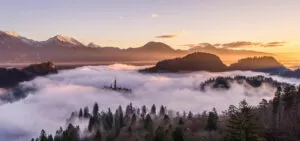
Summary: Your Grand Vista Captured
Choosing a camera for landscape photography is a journey in itself. Your ultimate choice should be based on your commitment to the craft and your budget. Focus on a camera with a high-resolution sensor, excellent dynamic range, and a durable, weather-sealed body. The most important thing is to remember that the camera is a tool. The real art of landscape photography is in your ability to see the light, compose the scene, and patiently wait for the perfect moment. The right camera is simply the one that helps you achieve that vision.
What Camera to Buy for a Beginner

What Camera to Buy as a Beginner?
Starting your journey into photography is an exciting time. The market is saturated with options, from simple point-and-shoot cameras to complex professional systems. As a beginner, your goal is to find a camera that allows you to learn the fundamentals of photography, while also providing enough room to grow and develop your skills. The ideal camera for a beginner is not necessarily the most expensive or the most feature-packed, but rather one that is intuitive, reliable, and provides a balance of convenience and creative control. This article will guide you through the features that matter most for a new photographer and discuss the trade-offs between buying a new, entry-level camera and an older, more advanced model, without recommending any specific camera by name.
What a Beginner Needs in a Camera
A beginner’s camera should be a tool for learning, not a barrier to creativity. The following features are the most important to consider.
- Manual Controls: A good beginner camera should allow you to shoot in manual mode. This means you can control the three pillars of photography: aperture, shutter speed, and ISO. By learning to adjust these settings, you will gain a deeper understanding of how to control light and create different effects in your images.
- Interchangeable Lenses: One of the biggest advantages of a dedicated camera is the ability to change lenses. An interchangeable lens system allows you to experiment with different types of photography, from wide-angle landscapes to up-close portraits. Investing in an ecosystem of lenses is a better long-term strategy than buying a fixed-lens camera.
- Ergonomics and Feel: The camera should feel good in your hands. You should be able to hold it comfortably and access the most important controls easily. An intuitive and straightforward menu system is also a huge plus, as it will help you find what you need without feeling overwhelmed.
- Autofocus System: While learning manual focus is a great skill, a reliable autofocus system is essential for capturing everyday moments. Look for a camera with a fast and accurate autofocus system that can lock onto your subject quickly and reliably.
- Screen and Viewfinder: A good quality screen is a huge convenience, especially one that is articulated or tilts, as it allows you to compose your shots from unique angles. A good viewfinder, whether optical or electronic, is also important, as it helps you to see what the camera sees and compose your shot more accurately.
The New vs. Used Debate for Beginners
For a new photographer, the decision between buying a new camera and a used one is a major factor in their budget.
New, Entry-Level Cameras
Pros:
- Modern Features: New cameras offer the latest technology, including improved autofocus systems, high-quality video capabilities, and wireless connectivity for easy sharing. They often come with a guided menu system that can help a beginner learn about different shooting modes.
- Warranty and Reliability: A new camera comes with a manufacturer’s warranty, providing a safety net in case of a hardware problem. You can be confident that the camera has not been used and is in perfect working order.
- Compact and Lightweight: Many new entry-level cameras are smaller and lighter, making them easy to carry around and less intimidating to use.
Cons:
- Compromises in Build Quality: To keep costs down, entry-level cameras often have a more plastic build and may lack weather-sealing. They may feel less robust than more expensive models.
- Potential for Over-Automation: Some beginner cameras have too many “auto” modes and presets, which can be a crutch and prevent you from truly learning the fundamentals of photography.
Used or Older, More Advanced Models
Pros:
- Exceptional Value: You can often find a used, older, mid-range or even professional-grade camera for the same price as a new, entry-level one. This can get you a camera with a larger sensor, a more durable build, and advanced controls.
- Professional-Grade Features: An older, more advanced camera may have a superior autofocus system, better low-light performance, and a more robust body. It may also have more physical dials and buttons, which can be a great way to learn about the camera’s functions.
- Access to a Wider Lens Market: An older camera system has a vast market of used lenses available at a great price, allowing you to build out your kit for less money.
Cons:
- Outdated Technology: An older camera may lack modern conveniences like wireless connectivity, a tilting touchscreen, and advanced video features. The autofocus system may be a bit slower.
- Wear and Tear: You have to be more careful when buying a used camera, as its condition can be unpredictable. You won’t have a warranty, and any repairs will be out of pocket.
- More Complex: An older professional-grade camera may have a more complex menu system and a steeper learning curve for a true beginner.
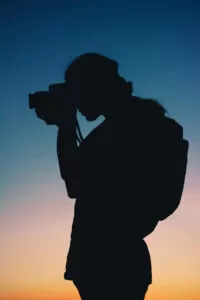
Summary: Your First Step into Photography
The best camera for a beginner is the one that you will actually use. While a new, entry-level camera with its modern conveniences and user-friendly interface is a great way to start, an older, more advanced model can offer an incredible amount of value and a more robust shooting experience. The key is to find a camera that allows you to experiment with manual controls and gives you the flexibility to grow your skills. Remember, the camera is just a tool. The real magic happens when you learn to see the world through a new lens and capture your unique vision.
